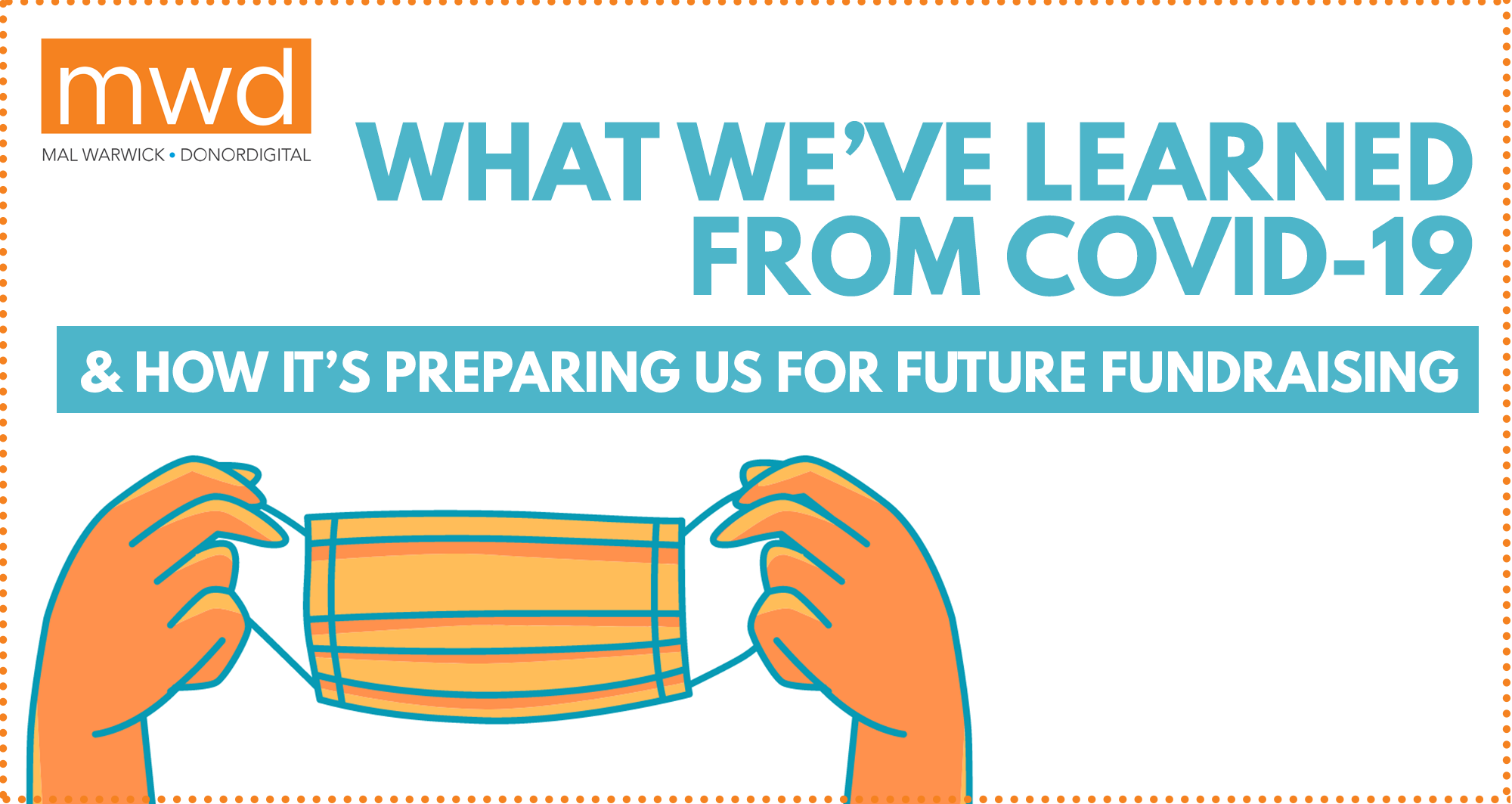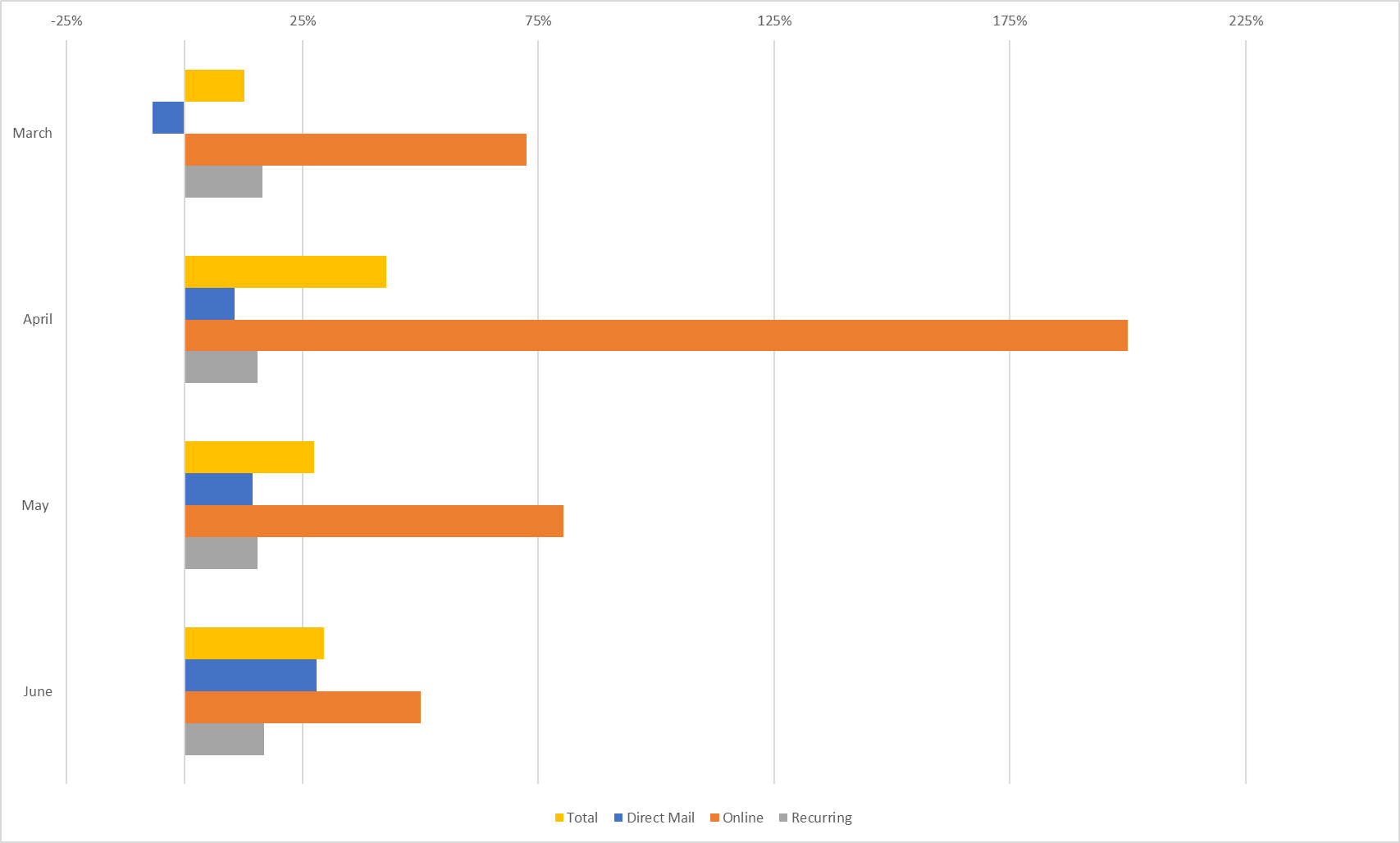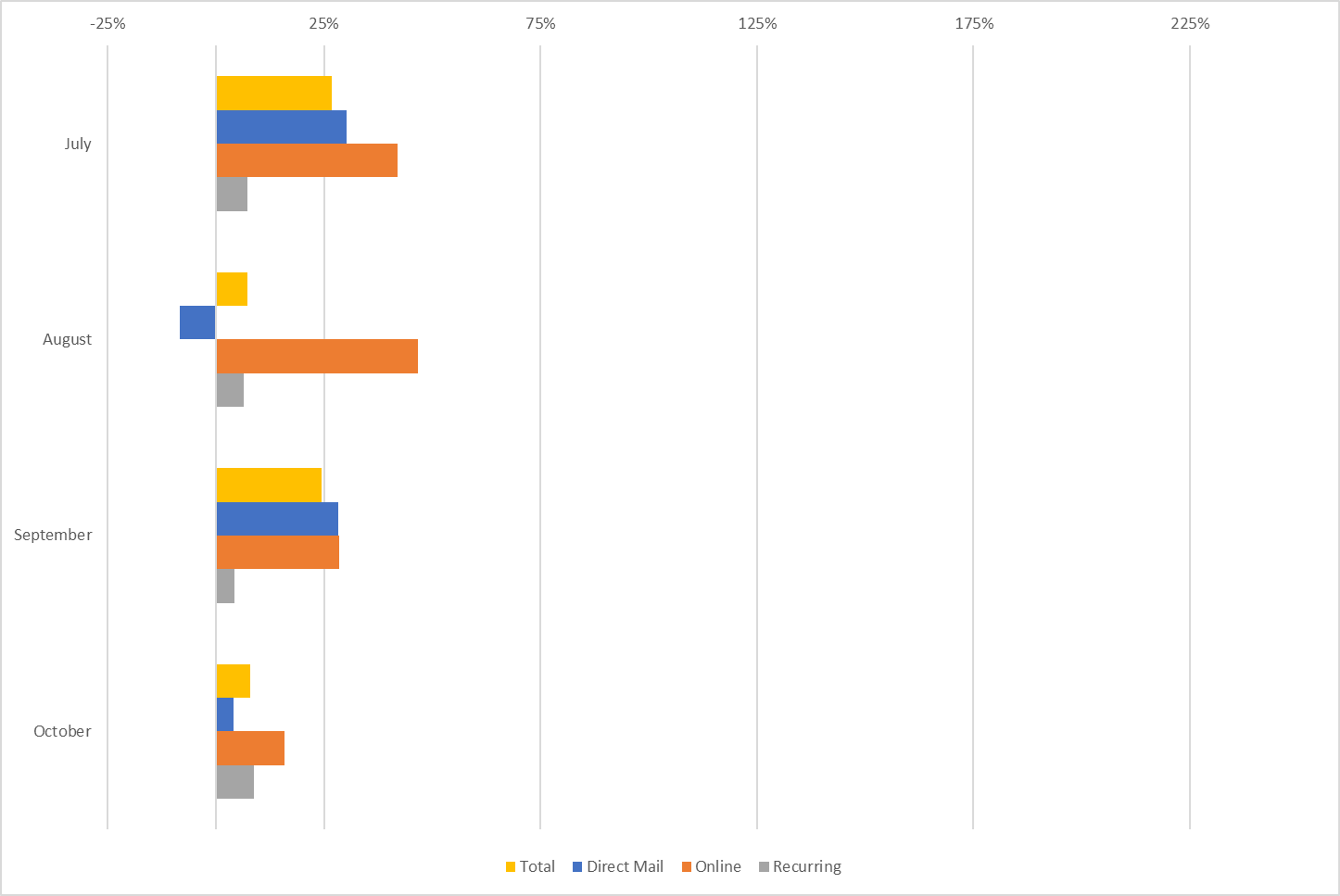
Last year was certainly one for the books. While we’re all glad it’s over, it’s worth taking a moment to reflect and see how far we’ve come to better predict where the nonprofit industry might be going next.
We overcame quite a lot in one year. There were the series of earthquakes that hit Puerto Rico, the Australian bush fires, and one of the most active hurricane seasons we've seen. There were also ongoing humanitarian crises around the world in places like Yemen and Venezuela.
We stood, marched, shouted, organized, voted, and demanded justice for Breonna Taylor, George Floyd, and thousands of others as we continue to grapple with deep-rooted racism and oppression in this country.
There was widespread economic uncertainty, and an outrageous and nerve-wracking election cycle (that continues to bring about historic political unrest).
And of course, last but not least, maybe you’ve heard about this little thing called the COVID-19 pandemic?
COVID started to make an appearance here in the United States in February, then we faced stay-at-home orders and a huge increase in unemployment. We wondered what would this mean for fundraising? Do we need to re-forecast? Should we start preparing for the worst?
We had some historical information to go on. From an economic standpoint, the 2008 recession took time before it hit the nonprofit fundraising sector. But this time was different. Digital fundraising now plays a bigger role in programs than it did in 2008, so how would that affect giving? Thinking about mail deliverability, would post offices start to shut down? Would people be able to get out to return their donations? (At this time, we weren’t even thinking about the new Postmaster General…that would be a worry for another day.)
In March, MWD began to look at our client's year-over-year performance on a monthly basis. Of course, many factors could affect results – changes to campaign dates, contact volumes, testing, all that good stuff. But we still wanted to at least get a sense of trends and follow those through the year as we headed toward the election.
We broke out our analysis by channel, looking at one-time gift revenue by channel, and separated recurring giving.
March-June
To most everyone’s surprise, we didn’t see a fall-off in the early days of the pandemic. While things were slow to get going, more than half of our clients experienced an increase in revenue by channel. But as the pandemic continued, the great majority of our clients saw an increase in giving, with digital seeing the most growth year-over-year.
In direct mail, we saw a decline in revenue when comparing March 2020 to March 2019. We attribute this to the initial worry about the virus in the media and many stay-at-home orders effective mid-March, causing uncertainty among donors. In the digital channel; however, we saw similar fundraising performance as we might typically see after a major natural disaster or emergency strikes with a large upswell of giving from donors concerned about the wellbeing of others. But unlike emergency giving where fundraising performance drops off quickly, as the pandemic continued so did increases in giving year-over-year.
We have also been seeing a consistent increase in recurring giving. We attribute that to the dedicated efforts organizations have been making to focus on monthly giving over the last few years, not necessarily because of the pandemic.

July – October
As we get into July, we continue to see the majority of our clients experience increases year-over-year. It isn’t until October where we start to see a shift, and only with the direct mail channel. While gains in direct mail weren’t as strong as we saw earlier in the pandemic, we continued to see robust year-over-year growth from digital and recurring giving.
Breaking it down by month, we are still seeing increases in revenue for our clients, although as we continue into the fall, it is not as strong as we saw in the initial March-June months. We are looking into whether this lower percent increase is in some part due to effects of the election, in particular in October.

November and December
With the ongoing distractions of the Presidential election and COVID cases spiking across the country, we plan to update this analysis to include November and December giving. Many of our clients are still recording their year-end giving, in particular in offline channels. We know for the digital channel, Giving Tuesday was especially strong in 2020, with the majority of our client seeing growth over last year. The final days of the year held on strong as well, as we had large increases in revenue year over year.
We’ve seen that the pandemic has resulted in an increase of support, not only to organizations helping with direct relief but to most every organization we work with. That shows that donors are craving connection and want to contribute positively during these uncertain times. We recommend in your messaging this year, that you give them the opportunity to support your organization’s work—and be sure to report back to them to let them know how their contribution is making a real difference. As we move into 2021, we move ahead with cautious optimism but knowing we are still treading into unchartered territory, and will want to keep tracking for immediate and future planning.

Christine Shilosky, Vice President, has over 15 years of direct response experience and an expansive knowledge of nonprofit fundraising. At MWD, she has been integral in leading client programs and helping analyze and evaluate direct marketing fundraising programs and strategies for numerous clients.
![[ Facebook ]](/img/connect-facebook.png)
![[ Twitter ]](/img/connect-twitter.png)